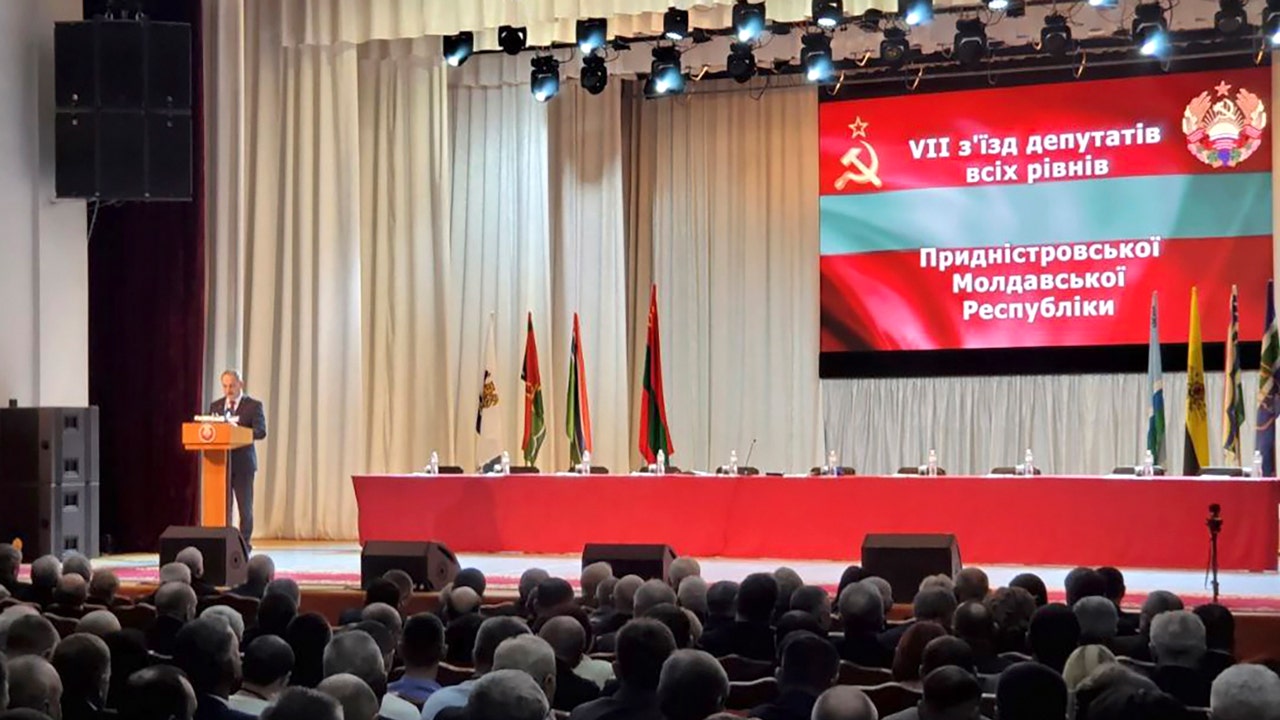Haiti’s bleak humanitarian situation is once again in the spotlight after gangs on Thursday attacked an Oklahoma-based missionary group working in the capital, Port-au-Prince, killing two Americans and the Haitian director of the organization, Missions in Haiti.
The attack left many asking why American missionaries are still working in Haiti considering the immense violence that has paralyzed the country and the grip gangs have over most of Port-au-Prince. Thursday’s episode follows the 2021 kidnapping of 17 missionaries who were working in Haiti with Christian Aid Ministries. A Haitian gang kidnapped 16 Americans and a Canadian in that attack; weeks later, 12 of the hostages escaped and the others were freed.
While Haiti is no stranger to violence and instability, the situation has worsened considerably since the 2021 assassination of the country’s president, Jovenel Moïse. Since then, the state has collapsed and gangs have proliferated, filling the vacuum.
The killings this week come as Kenyan-led forces are set to arrive in Haiti in the next few weeks to confront the gangs and help stabilize the country. They are being funded by the United States and other members of the international community.
The gangs now control much of the capital, including vital infrastructure, like national highways and seaports. They are able to hold up imports of basic food items and other necessities for a country that produces very little and relies heavily on foreign goods.
What is the current humanitarian situation?
Gangs now control or can exert their influence over about 90 percent of the capital, according to research groups. In many respects, Port-au-Prince is a giant, open-air prison, with much of the population of six million unable to move freely, gang violence dictating their everyday lives.
From March 1 to May 20, gang-related violence has killed 1,160 people across Haiti, including 136 women and 35 children, according to the latest figures from the United Nations. There were also 294 kidnappings, including six children, in that time.
More than 160,000 people are currently displaced in the capital’s metropolitan area, according to the International Organization for Migration, or I.O.M.
The organization reported in March that 15,000 Haitians were displaced within a single week, many of whom were previously displaced from earlier gang violence. The I.O.M. counted 10 displacement sites that were entirely emptied during a period of a few weeks, from February to March, by people fleeing “successive waves of violence,” according to a statement from the organization.
About 59 percent of the country lives below the poverty line and nearly one in four children suffer from chronic malnutrition, according to Unicef, the United Nations Children’s Fund.
What is the history of aid groups?
Aid groups have been active in Haiti for decades, but their presence ramped up after a devastating 2010 earthquake that leveled entire parts of the capital and killed some 300,000 people.
Since that earthquake, the international community has pumped roughly $13 billion into Haiti. But instead of helping the country get back on its feet, Haitian institutions have weakened, contributing to the current collapse of the state, according to some experts.
“Individual aid projects can be fine and offer help, but they are still part of a broader system that has undermined the state, reduced capacity and has partially led to the current situation that is unfolding,” said Jake Johnston, a Haiti expert at the Center for Economic and Policy Research, a think tank, and the author of the book “Aid State: Elite Panic, Disaster Capitalism, and the Battle to Control Haiti.”
“What has led to the rise of violence and insecurity is in many ways the lack of state presence — the lack of capacity — and that is largely the result of aid programs,” he said.
Aid groups say that they are preventing an already bad situation in Haiti — mass unemployment, rampant sexual violence, malnutrition and more — from spiraling further. Some aid workers blame international governments for Haiti’s current instability, claiming they have rallied behind the corrupt politicians whose poor governance has led the state to collapse.
When the earthquake struck in 2010, nearly half of all American families donated to Haitian relief efforts, according to the head of USAID at the time, Rajiv J. Shah. Wyclef Jean, the famous Haitian-born musician, ran a massive donation drive, collecting some $16 million, but was accused of squandering much of it.
When U.N. peacekeepers deployed in Port-au-Prince from 2004 to 2017, they were accused of fathering hundreds of children, then abandoning them and their Haitian mothers. Other peacekeepers were accused of running a child sex ring. The U.N. peacekeeping mission was also responsible for sparking a deadly cholera outbreak that killed at least 10,000 people and sickened hundreds of thousands.
While Haiti is teeming with aid organizations, the wide presence of Christian aid groups in the country — often managed by missionaries — has been among the most controversial.
What is the controversy around missionary groups in Haiti?
Although missionary groups in Haiti have launched some successful projects to feed, cloth and educate the population, particularly children, they are often viewed by Haitians with extreme mistrust.
In the aftermath of the earthquake, some missionaries were caught running orphanages that were accused of trafficking children illegally. Ten missionaries were jailed for trying to take 33 children to the United States without documentation.
The customary practice of many mission groups to send in outside volunteers — often from the United States — has opened them to criticism. Critics claim these groups leave Haitians entirely reliant on foreign help, doled out by Americans, in a patron-like arrangement that only perpetuates the country’s poverty by failing to build up local capacity.
How dangerous is the country for aid organizations?
Very.
In some other places, armed groups are often ideologically driven and tolerate or assist aid groups in their efforts to help the population. Instead, the gangs in Haiti exist to enrich or gratify themselves by preying on civilians — through extortion or rape, for example.
Gangs used to have somewhat more of moral code, allowing aid workers to carry out their work largely undisturbed. But that changed in 2021, when the state collapsed.
“Ten years ago, if you were an aid worker, Haitian or foreign, or a missionary, people would largely respect you,” said Pierre Espérance, the executive director of the National Human Rights Defense Network, a Port-au-Prince organization. “Now, the gangs don’t have respect for any institution in Haiti, not just aid groups.”
Over the last three years, gangs have attacked and occupied aid distribution centers, schools and hospitals. In a few instances, schoolchildren have run fund-raising drives to pay for their classmates’ ransoms.
But the gangs’ grip on seaports has complicated aid efforts as well. Gangs control not only some of Haiti’s most important docks, but also the roads leading in and out of the capital’s seaports. That has held up the delivery of fuel, crippling the entire country and frequently leaving aid groups unable to distribute vital supplies of essentials like food and medicine.
That has led to rampant inflation across Haiti. The price of basic food items, like rice, is skyrocketing.
Will the recent killings push aid groups to withdraw?
Unlikely.
Aid groups have continued to work in Haiti despite the challenges and danger many groups have faced over the years.
“When there is a need, that is when we are expected to work,” said Allen Joseph, a Haitian who is the program director for Mercy Corps, one of the largest international aid groups operating in Haiti. “And in Haiti, there is always need.”
Mr. Joseph and other aid workers said the latest violence targeting Missions in Haiti would most likely prompt their own aid groups to take on more security precautions, which will cost more.
As violence intensified last year, Mr. Joseph said Mercy Corps had to adapt its operations to provide security to its staff, most of whom are Haitian. Each Mercy Corps office in Haiti now has a “hibernation kit,” he said, in case staff members get locked down by violence and are unable to go home. Each kit includes mattresses, sheets, cooking materials and hygiene essentials.
Earlier this week, the living quarters that houses Mercy Corps’s international staff was caught in the crossfire of gang violence. Staff had to dive to the floor, lying on their stomachs or taking shelter in bathrooms — often the safest place in a building as there are few windows — as bullets flew.
“No one is spared. We live and work day by day with fear of being kidnapped or killed by an armed group,” Mr. Joseph said.






